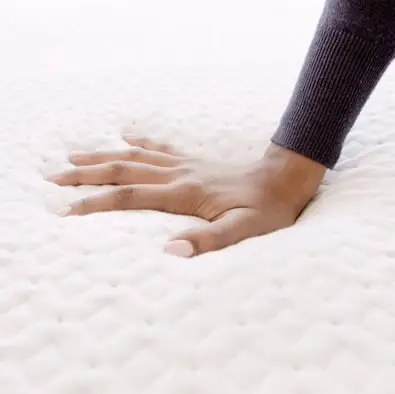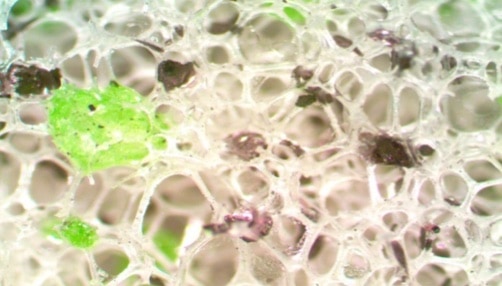Mattress shopping is already a hassle, and deciding between different memory foams make it an even harder task.
One of the most popular questions we get is “do memory foams really differ that much, or is it all just marketing hype?”.
The quick answer is: it depends on what you care about.
There are three main types of memory foams on the market: visco-elastic, gel-infused and plant-based. Each offers a different level of heat dissipation, bounce and other features.
This article will help you understand the differences among these three types of foam and hopefully make it easier for you to select the best memory foam mattress for your needs.
>> See My Favorite Memory Foam Mattress NOW >>
Why Do People Buy Memory Foam Mattresses?
Quality, cost and comfort are the most reasons people select a memory foam mattress.
Memory foam mattresses are often considered the most comfortable type of mattress because memory foams are very malleable and conform well to any body shape, which helps to evenly disperse body weight over the surface of the bed & to relieve pressure points in joints such as the hips and shoulders.
With less pressure concentrated on any part of the body, the body’s blood circulation increases and less pain develops, resulting in a better night’s sleep.
Most memory foams are also antimicrobial, keeping dust mites and other nasty bugs at bay, which allows for a healthier sleeping space.
Traditional Memory Foams

The original type of memory foam is visco elastic memory foam. It is still the most popular type of foam used in memory foam mattresses, today.
Visco is a petroleum-based polyurethane foam that was developed by NASA to counter the extreme forces astronauts encountered during space travel. Visco elastic foam is designed to adapt itself to temperature, firming-up where it encounters cold and softening when warm.
Visco elastic memory foams were introduced to the bedding industry by Tempurpedic, and are used in hundreds of mattress brands and models worldwide, today.
Pros
- Less motion transfer (less chance of disturbing your partner)
- Pressure point relief (reduces joint aches and back pain)
- Contours around your body very well
- Widely available
- Relatively inexpensive
- Antimicrobial
- Durable
Cons
- Can sleep hot because the petroleum-based materials used in it retain heat
- Often contains Volatile Organic Compounds (VOCs), which can be released after the mattress decompresses from its packaging (off-gassing)
Popular Mattresses that use Traditional Memory Foams
- Casper (second layer)
- Sparrow Signature Hybrid (SmartFlow, third layer)
- Nest Alexander Signature Series (SmartFlow, third layer)
- Nest Love Bed (SmartFlow, third layer)
- Tempurpedic
To see the best memory foam mattresses compared side-by-side, check out our Mattress Comparison Tables.
>> See My Favorite Memory Foam Mattress NOW >>
Gel-Infused Memory Foams

Gel-infused memory foams are the latest in memory foam sleep technology.
Gel foams keep the excellent sleeping properties of a traditional memory foam mattress, and infuse millions of gel beads or liquid gel droplets into the memory foam matrix.
The gel most mattress brands use is the same type of medical-grade cooling gel used in hospital burn units. It has the unique ability to absorb heat from anything it contacts very quickly, which produces a rapid cooling effect when used in a mattress.
Gel-infused foam is the memory foam industry's solution to the problem of heat retention (sleeping hot) that is often associated with visco elastic memory foams.
In addition to wicking-away heat fast, many gel foams are designed to increase air flow and wick-away moisture, which also makes for a cooler sleep.
Among store-bought mattresses, Serta’s iComfort line is the most popular brand using gel-infused foam, but other brands like Brentwood are also popular.
Pros
- Cooler sleep (initially)
- Effective at pressure point relief
- Low motion transfer
- Individualized contouring
- Can be firm or less comfortable than traditional memory foam (because of density)
- More bounce than traditional foam (returns to original shape faster)
Cons
- Once the gel has absorbed all the heat it can handle, the bed can warm up
- Often contains Volatile Organic Compounds (VOCs)
- Durability is not known, due to limited data
Many of the drawbacks of traditional memory foams also plague gel-infused memory foams.
Very limited scientific studies have been done on gel-infused memory foams, but the studies that have been done indicate that the cooling effect may not live up to its hype. Instead, gel-infused foams only appear to cool initially and then takes on the temperature of its environment over time. Also, the risk of heat retention increases with two or more individuals sharing the bed.
Popular Mattresses that use Gel-Infused Memory Foams
- Loom and Leaf (top layer)
- Endy Bed (top layer)
- Leesa (top layer)
- Bear (top layer, graphite-infused gel foam)
- Sparrow Signature Hybrid (second layer, copper-infused gel foam)
- Nest Alexander Signature Series (second layer)
- Nest Love Bed (second layer)
- Dromma Bed (second layer)
- Serta
- Brentwood
>> See My Favorite Memory Foam Mattress NOW >>
Plant-Based Memory Foams

Mattresses made with eco-friendly plant-based foams are often referred to as “green” or “natural” memory foam mattresses.
Plant-based memory foams are rising in popularity and fast becoming a consumer favorite.
Most plant-based memory foams use plant-based alternatives to replace a portion of petroleum-based material. In other words, the vast majority of plant-based memory foams also contain petroleum-based material.
Aloe Vera, bamboo, and tea are some of the more common plants used in the development of “green” memory foam.
Compared with other types of foams, plant-based memory foams often have excellent breathability due to their use of an open-cell design. They also reduce heat retention issues and VOCs which plague many traditional petroleum-based foam mattresses.
For example, Amerisleep’s plant-based memory foams are manufactured to produce zero emissions and emit/contain zero VOCs.
The natural substances used in plant-based foam mattresses also make them better for individuals who have sensitive skin or are prone to allergies.
Pros
- Pressure point relief
- Individualized contouring (does not rely on body heat)
- Much cooler sleep
- Low to no VOCs
- No off-gassing
- Much quicker response time
- Less allergic
Cons
- Much more expensive than traditional and gel-infused memory foam
- Showrooms selling plant-based foam mattresses are difficult to find; the best way is to shop online
Popular Mattresses that use Plant-Based Memory Foams
- Keetsa Pillow Plus (used throughout)
- Loom and Leaf (second layer)
Learn More
>> See All Online Mattresses Compared Side-By-Side >>
Affiliate Disclosure
Affiliate Disclosure: I may earn a small commission (at no cost to you) if you purchase a mattress after clicking a referral link or using a coupon code on this site. That said, all content and opinions on this site are my own and are NOT affected by these payments.
This site participates in the Amazon Services LLC Associates Program, an affiliate advertising program designed to provide a means for sites to earn advertising fees by advertising and linking to Amazon.com.
*Amazon and the Amazon logo are trademarks of Amazon.com, Inc, or its affiliates.

